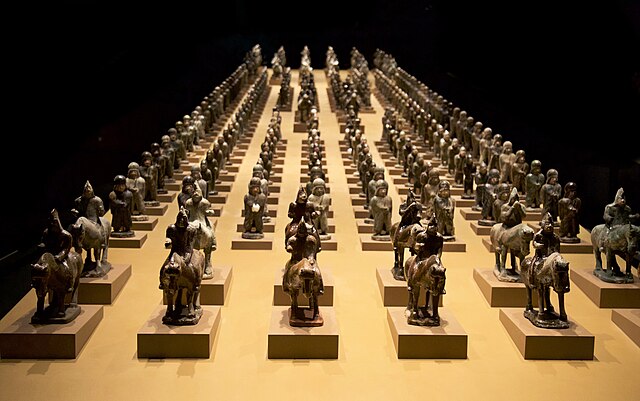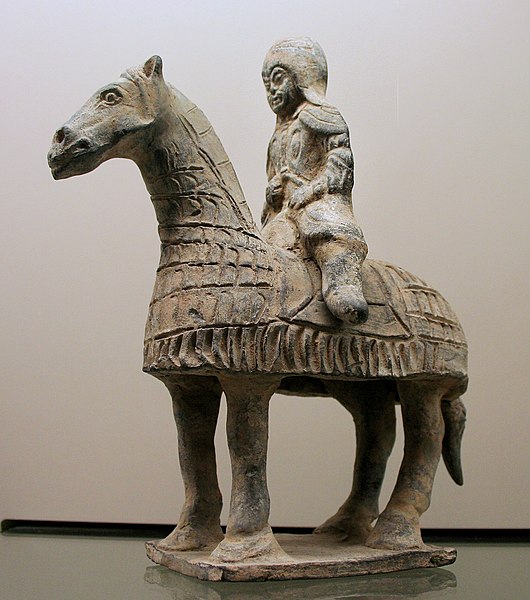Wei, known in historiography as the Western Wei, was an imperial dynasty of China that followed the disintegration of the Northern Wei. One of the Northern dynasties during the era of the Northern and Southern dynasties, it ruled the western part of northern China from 535 to 557. As with the Northern Wei dynasty that preceded it, the ruling family of the Western Wei were members of the Tuoba clan of the Xianbei.
Northern dynasties shieldbearer
Western Wei civil officer (535–557)
Bodhisattva Avalokiteśvara, Western Wei, Musée Guimet
Section of a Pagoda-Shaped Stele (Western Wei or Northern Zhou), mid-6th century CE
Wei, known in historiography as the Northern Wei, Tuoba Wei, Yuan Wei and Later Wei, was an imperial dynasty of China ruled by the Tuoba (Tabgach) clan of the Xianbei. The first of the Northern dynasties, it ruled northern China from 386 to 535 during the period of the Northern and Southern dynasties. Described as "part of an era of political turbulence and intense social and cultural change", the Northern Wei dynasty is particularly noted for unifying northern China in 439, bringing an end to the chaotic Sixteen Kingdoms period, and strengthening imperial control over the rural landscape via reforms in 485. This was also a period of introduced foreign ideas, such as Buddhism, which became firmly established. The Northern Wei was referred to as "Plaited Barbarians" by writers of the Southern dynasties, who considered themselves the true upholders of Chinese culture.
Army of Northern Wei terracotta soldiers in Xianbei uniform, tomb of Sima Jinlong, 484 CE.
Northern Wei warrior, tomb mural, Datong
Northern Wei officer. Tomb statuette, Luoyang Museum.
Mounted warrior of the Northern Wei dynasty from the collections of the Musée Cernuschi.








